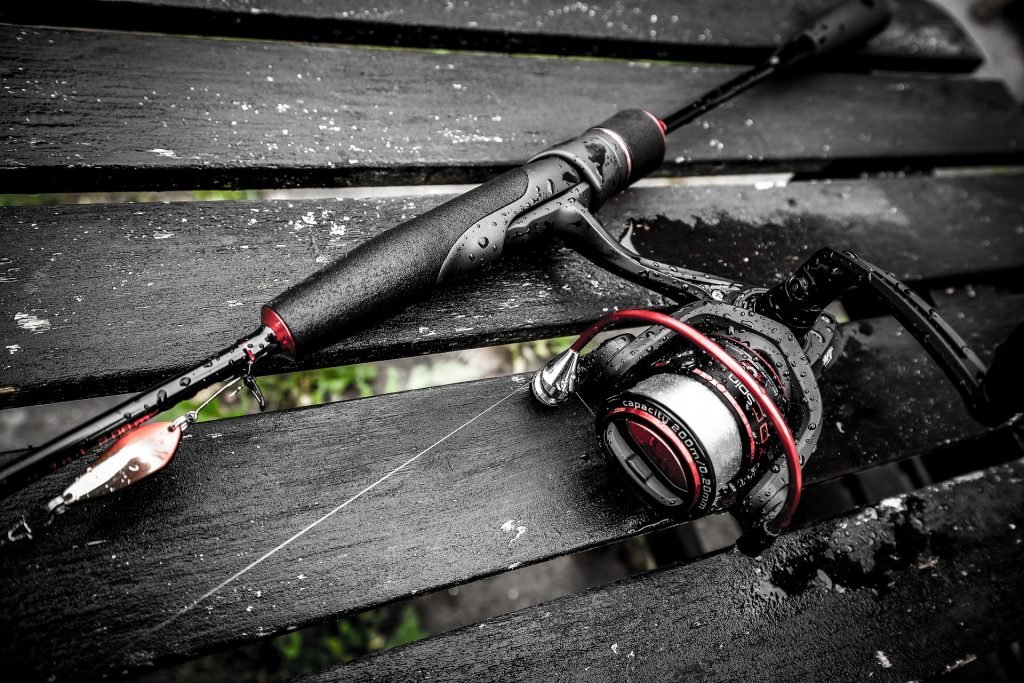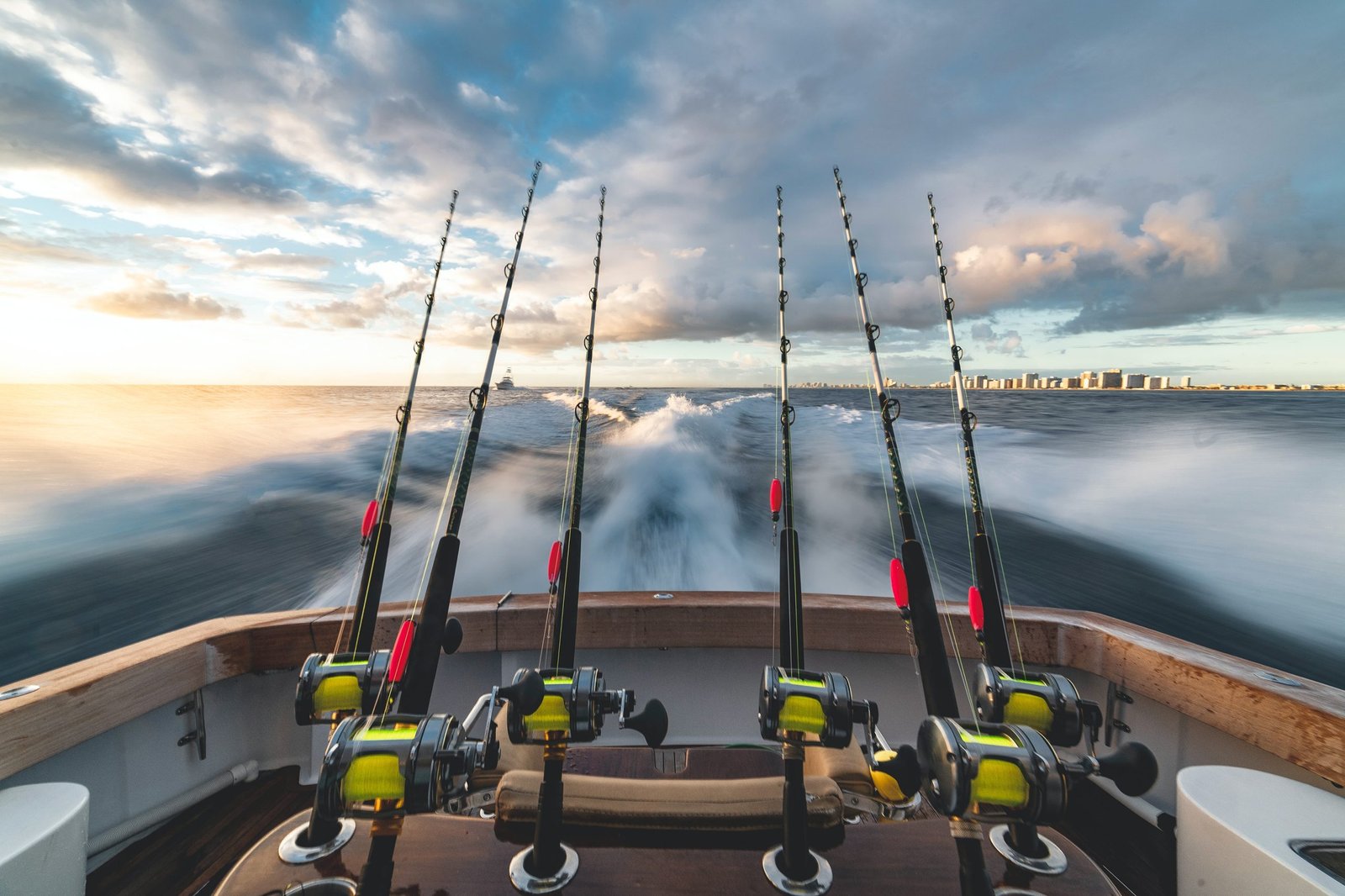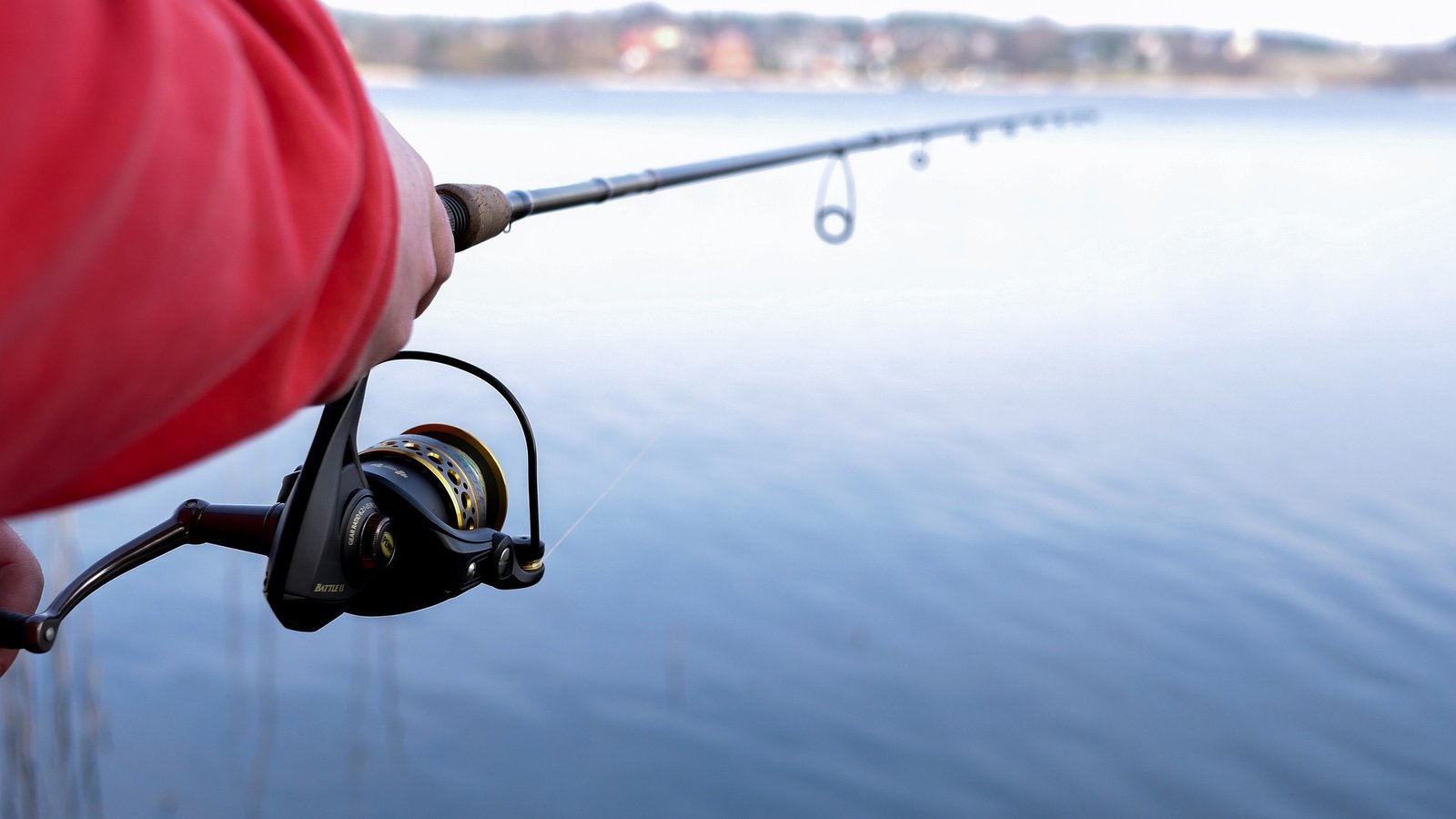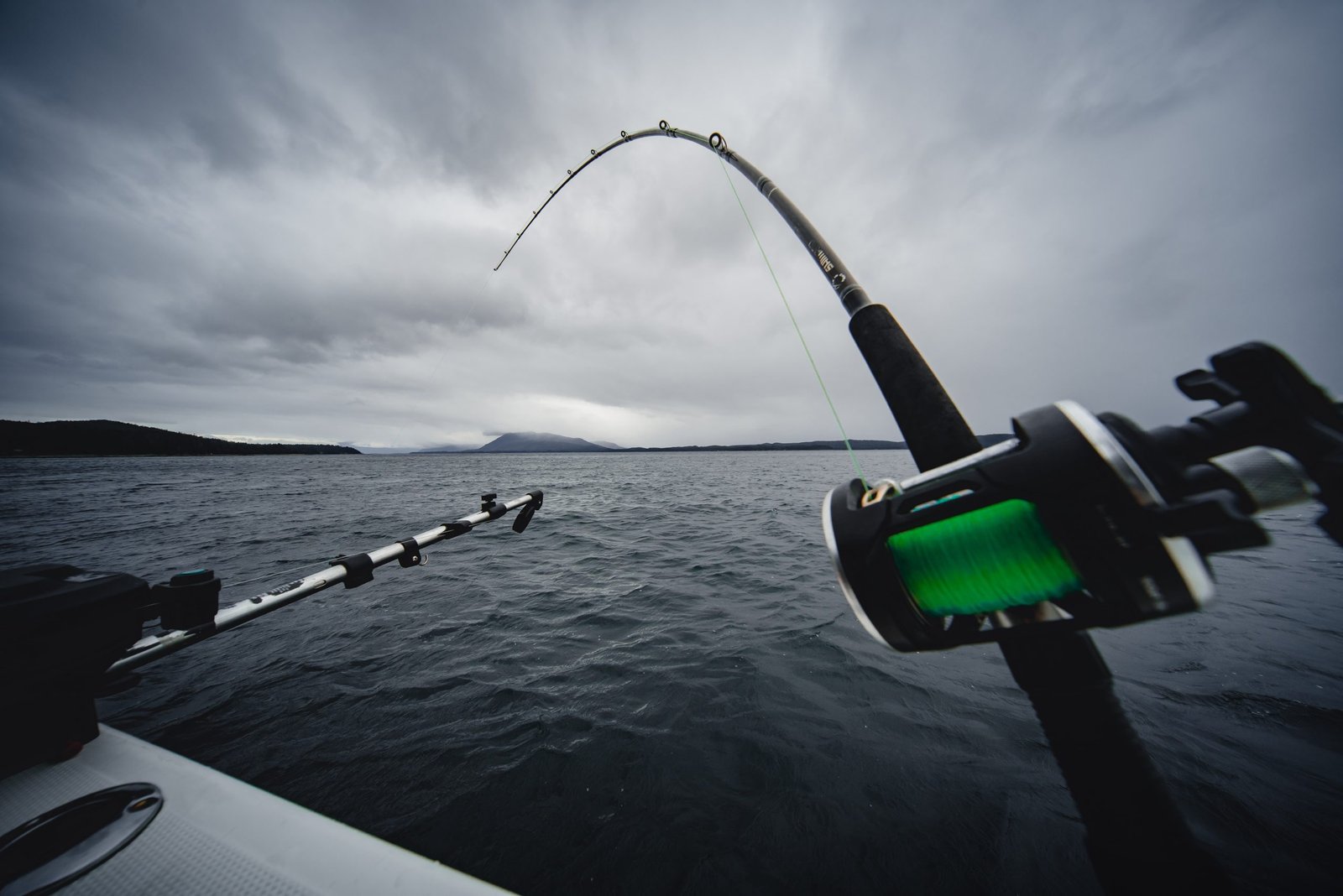
So you’re just getting started with fishing and don’t have any idea which rod to get. In this case, I got you covered.
The first time I bought a rod I remember the pure enthusiasm I felt while having to choose between hundreds of options, all with different purposes and configurations.
Until I realized I only have a few bills to get something good and that was it. That’s how I learned to choose the right action, power and quality, all at an affordable price.
Without any more talking, I’ll tell you straight what you need to get. It may vary from angler to angler, but what I’m going to tell you is the best all-around rod configuration for different fish species and techniques.
A fast action, medium power rod is the most versatile and forgiving type of rod. For length, I would go with anything between 6 or 7 feet. It offers the right balance between casting distance and accuracy.
I’ll also show you some good reels to pair these rods, so you can have a complete setup without any more additional searching.
So, without further ado, let’s get into the details and find the best rods for beginners.
The Best Rods for Beginners
When you first start fishing, choosing the right rod is crucial to ensure that you get the most out of your trips. I wouldn’t want a broken rod or a wrong configuration for my first time out fishing. But this is what the options below are meant to fix: quality and performance, all at an affordable price.
Why Start with a Spinning Combo
Spinning combos are ideal for beginners because they’re user-friendly and versatile. They typically consist of a spinning rod and a spinning reel, where the reel hangs beneath the rod and uses a fixed spool. This setup minimizes line twist and snags, which are common challenges for newcomers.
Combos also mean that the reel and rod are perfectly matched, taking out the guesswork for those just starting out. But for those who want to get serious and learn about fishing, choosing your reel separately might be a better option.
Spinning Rod Options
))/4007576.json)
Ugly Stik Elite Spinning Rod is widely acknowledged as a top choice. With lengths ranging from 5 to 7 feet and powers from ultra-light to medium, this rod supports a variety of baits and techniques. You’re most likely to find it in your local tackle shop, so you can get it and fish right away. Would pair it with a Shimano Sedona, being a high-quality option at a reasonable price.
))/3739788.json)
- Best All-Around Spinning: Falcon BuCoo SR. This is an improvement from the Ugly Stik, coming at around $100 and offering superior performance. It’s extremely sensitive and doesn’t sacrifice durability. Pair it with the Pflueger President, or even the Sedona, and you have a good mid-range setup that will catch fish everywhere you go.
- Best Budget Reel/Rod Combo: Shakespeare Ugly Stik GX2 Spinning Rod and Reel Combo
Here’s what I found as the best options, summarized in a table:
| Rod Type | Attributes | Why It’s Great for Beginners |
|---|---|---|
| Ugly Stik Elite Spinning Rod | 5 to 7 feet, Ultra-light to Medium power | Sturdy, reliable, and great value |
| Falcon BuCoo SR Spinning | 7-foot Medium | Versatile for various beginner techniques |
| Shakespeare Ugly Stik GX2 Combo | Budget-friendly, Combo | Affordable and reliable |
Baitcasting Rod Options
Baitcasting rods offer higher accuracy and control, which is great for targeting specific areas and fishing for bass. However, they are a bit more challenging to master than spinning rods.
- Best All-Around Baitcasting: Dobyns Colt 7-foot Medium Heavy. It works well with something like Lew’s Speed Spool LFS Baitcasting Reel.
Having a baitcasting rod that’s precise and gives you better control of the lure is key as you improve your skills. But as a beginner, you should only venture into baitcasting rods once you’re comfortable with the basics of casting and retrieving with spinning gear.
From now on, I’ll tell you more about rod basics and how to actually choose one.
Choosing Your First Fishing Rod
Understanding Rod Action and Power
Action refers to where a rod flexes when pressure is applied. Beginner fishing rods with moderate to fast actions are versatile and forgiving, making them ideal for a variety of techniques.
Power is the rod’s resistance to bending, with classifications ranging from ultra-light to heavy. I found that starting with a medium power rod provides a good balance for different fish sizes and techniques.
Why Rod Length Matters
Choosing the right rod length is crucial. Generally, rods range from 4 feet to 14 feet. I suggest starting with a 6 to 7-foot rod for beginners because they offer good casting distance and are easy to manage. A shorter rod is better for precise casts in tight spots, while longer rods are best for casting further.
Guides and Eyes
The guides and eyes on a rod help in smooth casting and retrieving of the line. Beginner rods should have sturdy yet lightweight guides that can handle various line types. Stainless steel guides with ceramic inserts are a great option because they reduce friction and are durable. But there are many more material combinations and blends out there, although for beginners the difference is minimal.
Materials: Graphite vs. Fiberglass vs. Composite
When it comes to rod materials, you’ll encounter graphite, fiberglass, and composite blanks.
- Graphite: Sensitive and lightweight, great for detecting light bites.
- Fiberglass: Durable and often more affordable, excellent for beginners due to its toughness.
- Composite: A mix of graphite and fiberglass, offering a balance of sensitivity and durability.
As a beginner, I would choose a fiberglass rod for its durability and forgiving nature. However, as you become more experienced, you’ll like the sensitivity provided by carbon fiber rods.
Targeting Popular Fish Species
Rods for Bass Fishing
For bass fishing, particularly when you’re on the hunt for largemouth or smallmouth bass, a rod that offers a good balance of sensitivity and strength is ideal.
A medium power rod with a fast action is ideal, as it gives you the backbone to set the hook effectively and the sensitivity to detect subtle bites. I prefer a spinning rod, like the Ugly Stik Elite Casting Rod, because of its durability and well-rounded performance for beginners. For bass fishing, the Abu Garcia Max X is a perfect option at a decent price.
Finding the Right Rod for Trout and Panfish
When targeting trout and smaller species like crappie, perch, bluegill, or even flounder, an ultra-light to medium power rod within the length of 5 to 7 feet works wonders.
These rods typically have a fine-tuned sensitivity required for detecting the light nibbles from these smaller fish.
A cork handle is usually my top choice, as they offer a comfortable grip for those long days by the water. The Fenwick Eagle Spinning Rod is the best option, priced at around $100. It works best with something like the Daiwa BG.
Rods for Saltwater
Given the huge number of saltwater species out there, recommending a rod for each specie would take some time, so I’ll divide it in two categories: lighter rods for inshore fishing and heavier rods for offshore boat fishing.
For inshore fishing, a spinning setup would work best. A good saltwater rod for inshore fishing is the TFO Pro S Medium Power rod. It’s recommended for its versatility and all-purpose design, which is suitable for a variety of inshore species. The medium power provides the right balance of sensitivity and strength for beginners who are learning how to handle different fish. The Penn Battle III is known for its durability, which is essential for withstanding the harsh saltwater environment. It also offers a full metal body and heavy-duty aluminum bail wire, ensuring that it can handle the fight of inshore species. The Penn Battle III has a reputation for a smooth drag system and is available in various sizes to match the TFO rod perfectly.
Believe it or not, the Ugly Stik GX2 is a very good option for offshore fishing. It’s a versatile option that can be used in both freshwater and saltwater environments. It’s known for its durability and strength, which is essential for battling larger offshore fish. This rod is a great value for beginners looking to get into offshore fishing without investing a lot of money upfront. Many anglers have used them to catch big tunas and they still hold up very well. A good pair is the Penn Battle III (spinning) and the Penn Squall Level Wind Reel (baitcasting). The Squall is a more pricy option, but it will do a great service on your boat for many years to come.
Final Thoughts
Overall, I wish this article helped you make a final choice and to start fishing as soon as possible.
Now you know which fishing rod and reel to get, but how about lines? Here is an article on how to choose fishing lines and the best options available.
To summarize, you need a rod that has:
- A moderate to fast action;
- A medium to heavy power;
- Length around 6-7 feet;
- Quality construction: guides, handles, reel seats.
And the best options are:
- Falcon BuCoo SR Spinning – best all-around option, works best with the Pflueger President or Shimano Sedona;
- Ugly Stik Elite Spinning Rod – suitable for bass, but works for other applications too, works best with Shimano Sedona (spinning) or Abu Garcia Black Max (baitcasting);
- Fenwick Eagle Spinning Rod – best for panfish and trout, works best with the Daiwa BG.
Until the next one, tight lines!
Frequently Asked Questions
In this section, I’ll cover some of the most common questions that you, as a beginner angler, might have when selecting your first fishing rod.
What is the ideal fishing rod length for a novice angler?
The best rod length for beginners typically ranges from 5 to 7 feet. This length provides a good balance between casting distance and accuracy. It’s long enough to achieve some distance, yet short enough to maintain control.
How do I choose between spinning and casting rods when starting out?
Spinning rods are generally easier to use for beginners and are versatile for various fishing techniques. Casting rods have a learning curve but are great for precision and power when you’ve gained some experience. Start with a spinning rod for ease of use.
Can you recommend a fishing rod and reel combo suitable for first-time fishers?
Yes, the Ugly Stik Elite Spinning Rod and Reel Combo comes highly recommended for beginners. This combo offers a mix of durability, smooth reel performance, and a comfortable cork handle, making it an excellent choice for those starting out.
What are the differences between freshwater and saltwater rods for beginners?
Freshwater rods are typically designed for lighter use, while saltwater rods are built to withstand the harsher marine environment and larger fish. As a beginner, a freshwater rod is usually sufficient unless you plan to fish in saltwater exclusively.
What should a beginner look for in the durability and material of a fishing rod?
Beginners should look for rods made with durable materials like graphite or composite, as they offer a good balance between strength and flexibility. Also, check for a rod with a sturdy construction to withstand the typical learning curve of handling fishing gear.
How important is rod action and power for a new fisherman, and what should they start with?
Rod action and power are crucial as they affect the casting and fish-fighting abilities. New fishermen should start with a medium power rod with fast action, as they are versatile and forgiving, making them suitable for catching a variety of fish sizes.
As an Amazon Associates member, I might earn a commission when you buy through the links on this page, at no additional cost to you. Thanks for helping me do what I like.




